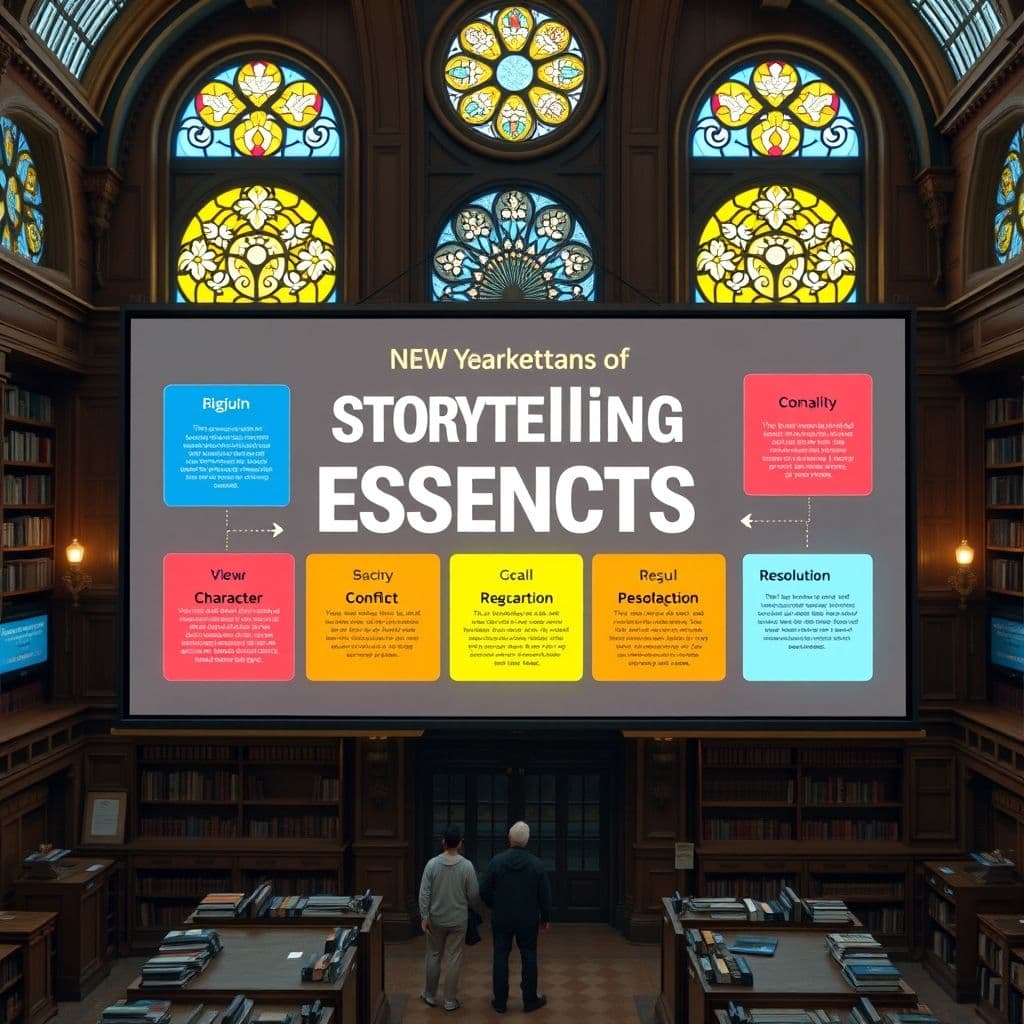Master Digital Narrative Design: A Step-by-Step Guide to Engaging Storytelling

In today's digital age, storytelling has evolved beyond traditional mediums. Digital narrative design combines the timeless art of storytelling with modern digital tools to create immersive and engaging experiences. Whether you're a content creator, marketer, or just someone passionate about stories, mastering digital narrative design can elevate your work. This guide will walk you through the essential steps, from understanding the basics to leveraging advanced techniques. View original learning path
Step 1: Understanding Storytelling Basics
Before diving into digital platforms, it's crucial to grasp the fundamentals of storytelling. Every compelling story has key elements: a clear structure, well-developed characters, and a conflict that drives the narrative forward. Understanding these basics will serve as the foundation for your digital narratives.

Step 2: Exploring Digital Platforms
Digital narratives can be shared across various platforms, each with unique features and audience expectations. From blogs and social media to interactive websites and apps, understanding these platforms will help you tailor your stories for maximum impact. Consider how each platform's features can enhance your narrative, such as Instagram's visual focus or Twitter's brevity.
Step 3: Crafting Compelling Narratives
A great digital narrative grabs attention from the start. Creating a strong hook is essential to draw your audience in. Build tension throughout the story to keep them engaged, and aim for emotional resonance to make your narrative memorable. Think about how your story can connect with the audience on a personal level.
Step 4: Visual Storytelling Techniques
Visuals play a pivotal role in digital storytelling. The use of imagery, color theory, and thoughtful typography can significantly enhance your narrative. Colors evoke emotions, and the right layout can guide your audience through the story seamlessly. Experiment with these elements to find what best suits your narrative.

Step 5: Integrating Multimedia Elements
Digital narratives thrive on multimedia. Incorporating audio, video, and interactive elements can make your story more immersive. Sound design can set the mood, while video can bring your narrative to life. Interactive elements, like clickable stories or quizzes, can engage your audience actively.
Step 6: Editing and Refining Your Story
A great story often requires multiple drafts. Seek feedback from peers or your target audience to identify areas for improvement. Ensure consistency in tone and style throughout your narrative, and polish it for clarity. A well-edited story is more likely to resonate with your audience.
Step 7: Publishing and Distribution
Choosing the right platform for your narrative is crucial. Consider where your target audience spends their time. Optimize your story for SEO to improve discoverability, and leverage social media strategies to amplify your reach. A well-planned distribution strategy can make all the difference.
Step 8: Analyzing Audience Response
After publishing, it's essential to analyze how your audience responds. Use metrics and analytics to track engagement, and collect feedback to understand what worked and what didn't. This data will help you iterate and improve future narratives.
Step 9: Advanced Storytelling Techniques
Once you've mastered the basics, explore advanced techniques like transmedia storytelling, where a single narrative spans multiple platforms. Augmented and virtual reality can offer immersive experiences, while data-driven storytelling can personalize narratives based on audience data. These techniques can take your digital narratives to the next level.

Conclusion
Digital narrative design is a powerful tool for connecting with audiences in meaningful ways. By mastering the fundamentals and exploring advanced techniques, you can create stories that captivate and resonate. Remember, great storytelling is an iterative process—keep refining and experimenting to find what works best for your audience.
Frequently Asked Questions
- How long does it take to master digital narrative design?
- Mastering digital narrative design depends on your prior experience and dedication. With consistent practice, you can see significant progress in a few months, but storytelling is an evolving skill that benefits from continuous learning.
- What are common mistakes beginners make in digital storytelling?
- Common mistakes include neglecting the audience's perspective, overcomplicating the narrative, and not leveraging multimedia effectively. Start simple, focus on clarity, and gradually incorporate more elements as you gain confidence.
- Can I use digital narrative design for business purposes?
- Absolutely! Digital narrative design is highly effective for branding, marketing, and customer engagement. Businesses use storytelling to connect with their audience, convey their values, and enhance their online presence.





